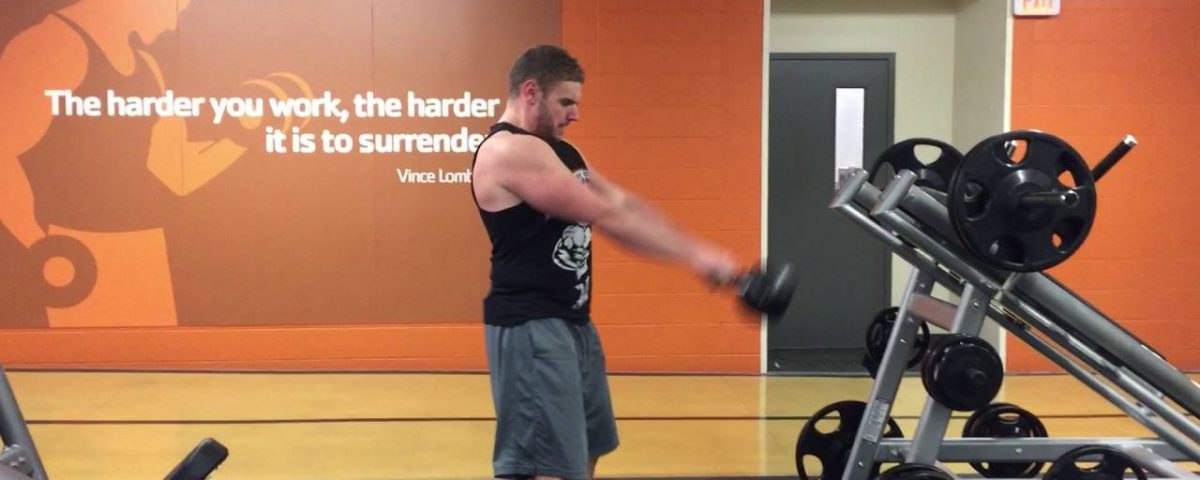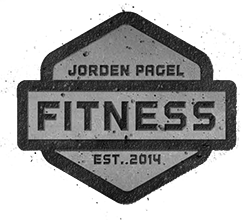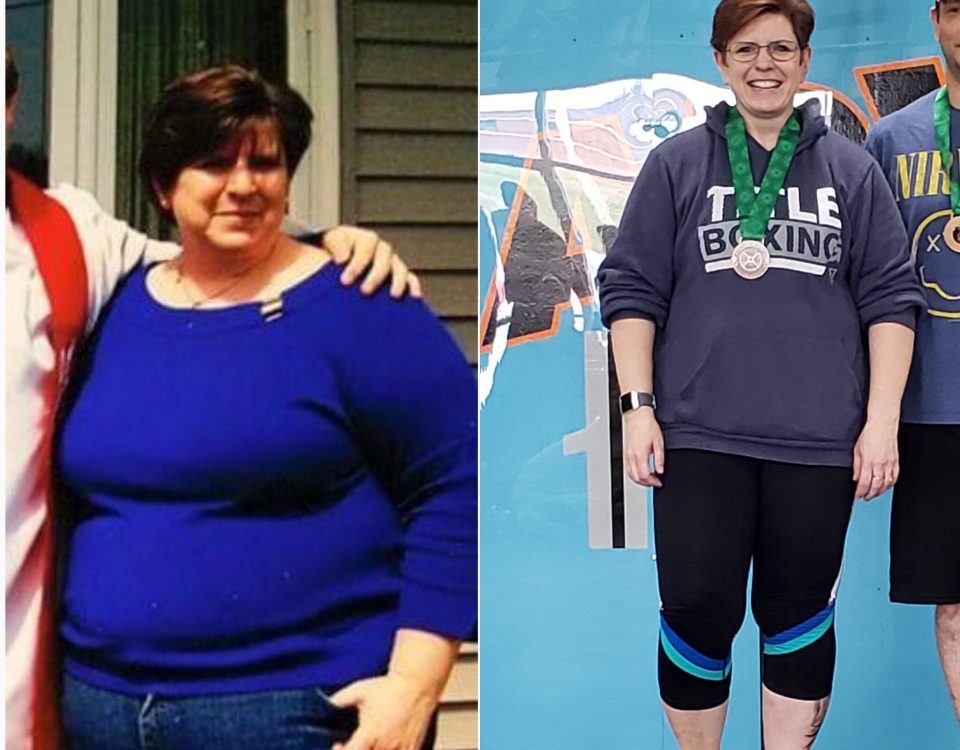The Best Exercises You’re (Probably) Not Doing

As a trainer and coach I often get asked what are the best exercises for this and that. And the answer is, it depends. The best exercises for one goal are certainly not the best exercises for other goals.
When creating programs, I’m a big fan of variety. Not because I believe muscles need to be “confused”, but rather because there are a ton of exercise variations out there that get no love. I feel bad for them.
Not only to they get no love by a majority of the gym-going population, but many people are missing out on the benefits these exercises provide.
That’s why I set out to create a list of some of the best exercises most people aren’t doing. I didn’t use any special method to select them…they are simply exercises you don’t see many people doing in the gym on a regular basis, yet provide some awesome benefits.
So in other words, start doing them.
Here’s the list…
Upper Body
Standing Overhead Press
The barbell OHP is one of the best exercises in existence for the upper body (I wrote more about it here). However, it often plays second fiddle to the barbell bench press in most gyms. When it comes to total muscular recruitment, the OHP is more of a total body exercise than the bench press.
Some people don’t have the shoulder mobility to perform a proper barbell OHP, so dumbbells would be a better choice for them.
One-Arm Dumbbell/Kettlebell Shoulder Press
This shoulder press variation is great because not only does it help build strong, healthy shoulders, but it also helps build strength and stability through the core. The offset weight forces you to create more tension in your abs to keep an neutral position. Doing this exercise with a kettlebell increases the stabilization aspect even more.
Single-Arm Landmine Press
This variation can be done standing or kneeling, and is a good alternative for those who have trouble performing a proper overhead press. The angle here helps hit the front of the shoulders and upper chest more.
Wide-Grip Upright Row
The upright row gets a lot of bad press because it’s often considered dangerous. However, when done with proper form, it is an extremely effective shoulder and upper back exercise. The key is to not let the elbows extend past the shoulders.
I like the wide-grip version because it recruits the lats more, and I’m all about dem lats.
Rack Pulls
Rack pulls are a great back-building alternative to the deadlift. Because you’re not pulling from the floor, you’re all but eliminating the use of the glutes and hamstrings, focusing solely on the back. This is also a great grip builder because it allows you to move more weight than a deadlift from the floor.
Face Pulls
Another great back/shoulder combo exercise, the face pull is great for building strength and stability in the rear delts and upper back. Don’t go too heavy or rush through the movement. Really feel the muscles working. I like to throw in a 1-2 second pause at peak contraction.
Inverted Rows
Outside of pull-ups and push-ups, bodyweight movements don’t get a lot of love. But not only are inverted rows a great back-builder, they have a great carryover to better pull-ups.
The higher you set the bar, the easier the exercise will be. To increase the difficulty, lower the bar, or elevate your feet.
Floor Presses
Floor presses are great because they can be done a number of different ways. Not only will they help increase your bench press strength, they really hit the triceps hard too.
With barbell floor presses, I like to extend my feet out in order to remove any leg drive.
They can also be done with dumbbells. I like to perform them alternating-style to increase the stabilization aspect.
One-arm floor presses are great too, because again it really forces you to brace through the core to maintain proper position. Again, to increase the stabilization necessary, you can use a kettlebell.
Lower Body
Hip Thrusts/Glute Bridges
I think the biggest reason that most people don’t perform these exercises is because they feel awkward doing them. But no one ever said getting strong as hell wasn’t going to be a little awkward.
Outside of the squat – and maybe even more so than the squat – hip thrusts and glute bridges are the best exercises on the market for building your glutes and hamstrings.
Glute bridges would be a good starting point for most because they don’t require as large a range of motion as hip thrusts.
Hip thrusts activate the glutes more and are great for building dat booty. Just always remember to make direct eye contact with strangers when performing hip thrusts.
Bulgarian Split Squats
Bulgarian, or rear-foot elevated split squats are probably one of the most underutilized squat variations. Barbell squats can be taxing on the back, but with BSS, the load is place at your sides, not on your spine. BSS also have a shorter learning curve than squats, as it can take someone weeks, months, or even years to learn how to squat effectively.
I love single leg exercises because they are probably the most effective (and safest) way to train balance. They also offer great core activation.
For even more core activation, try using a goblet-style hold.
Single-Leg Romanian Deadlifts
If BSS are my favorite knee-dominant unilateral movement, then single-leg RDLs are my favorite hip-dominant unilateral movement. Much like BSS, these are great for improving balance and stability. Plus, you know…dat booty.
These can be difficult for beginners, so either begin with just bodyweight, or hold on to something for assistance.
Front Squats
Front squats don’t get a lot of love, but for many seasoned lifters, they are actually the preferred movement to the back squat. Instead of the load being place on the back, compressing the spine, it’s placed across the front delts and upper chest. This forces you to use your abs and upper back to maintain a more upright position.
It also places more emphasis on the quads and allows you to get more depth. The best thing I ever did for my back squat depth was switching exclusively to front squats for a while.
I wrote a whole article on front squats so check that out here.
Total Body
Trap Bar Deadlift
This is one of the best exercises for total body training. The trap bar (or hex bar) deadlift is a fantastic total body movement, and alternative to the conventional straight bar deadlift. No hate meant to the straight bar deadlift; it’s probably my favorite exercise actually.
Where the trap bar deadlift has the advantage however is that it places less stress on the spine. This is because the weight is centered over the axis of rotation (the hips) rather than in front like with a straight bar. This makes how much you can lift dependent on the strength of your legs, not your lower back.
The trap bar deadlift also builds more power than a straight bar deadlift. With a straight bar, as you get towards the top of the lift, you decelerate as you get closer to the body; mainly so the bar doesn’t slam into your junk. With a trap bar, you can accelerate all the way through the lift because the bar never hits your body.
If your back is bothering you from excessive deadlifting, or you just want to try something different, sub the trap bar deadlift for straight bar deadlifts in your workout.
Kettlebell Swings
Few exercises are more versatile than the kettlebell swing. Swings can be used to increase strength, power, endurance, aerobic, and anaerobic capacity. The kettlebell swing uses nearly every muscle in your body, including your entire posterior chain (the muscles that run from your neck, down your back to your feet).
Because of the nature of the swing, it is much safer for the lower back than say deadlifts or cleans. This means that it can be used with heavy loads for low reps to increase strength and power, or with light loads for high reps to improve endurance, aerobic capacity, and conditioning. Add them to the end of any workout to ramp up your metabolic rate.
Turkish Get-Up
At its core, the Turkish Get-Up is pretty simple. However, a proper get-up requires a bit of practice. The benefits though, are many. The Turkish get-up increases leg/hip mobility and stability, shoulder mobility and stability, thoracic extension and rotation, core stability, and much more.
The get-up can be used a number of ways, for strength, conditioning, or as part of your warm-up because it hits almost every movement pattern. The goal however, is not to rush though it but to take your time and flow from one portion of the movement to the next.
Farmer’s Walks
I’ve written extensively about farmer’s walks before, so I won’t rehash it too much. What I will say however, is that farmer’s walks and loaded carries are probably one of the best exercises you’re not doing.
Loaded carries hit everything from your back, shoulders, arms, grip strength, core, hips, and legs. They can be used for strength training, muscle building, fat loss, or conditioning. They really are the swiss army knife of total body exercises.
Core
Body Saw Planks
This are a fantastic advanced variation that forces you to hold a plank position while your body is in motion. Simply place a towel on the floor and slide yourself forward and back while maintaining a normal plank position. The farther your elbows get from the center of your body, the harder the movement becomes.
Landmine Rotations
One area people often neglect in their ab training is anti-rotation, or training the core to resist rotation of the spine. During landmine rotations, you’re forcefully placing torque on the spine, so your core has to work harder to resist rotation.
These can also be don’t from a kneeling or half kneeling position which decreases your stability and forces the abs to work harder.
Pallof Press
The pallof press is another great anti-rotation exercise where the weight is trying to pull your body to one side, and your abs need to work to resist. The most common problem people face with this movement is trying to go too heavy. The goal is to go through the movement slow and controlled, while maintaining a vertical torso.
Like rotations, these can also be done kneeling or half-kneeling.
Deadbugs
While it looks easy, the deadbug is one of the best exercises for learning how to engage your core. To perform a deadbug effectively, you need to tighten your abs, and press your lower back hard into the floor. If you back arches and rises up off the floor, it makes the exercise much less effective.
Also because of the movement, and position that you are in, the deadbug forces you to learn how to move your hips without engaging your lower back, and move your shoulders without moving your spine.
You can also hold weights or a kettlebell to activate the core more.
While this is not an exhaustive list by any means…nor do I think these exercises are “the best”…they certainly are not seen being performed too often in most commercial gyms.
The benefits they provide however, are too great to ignore. And for people looking to take their strength, size, or fat loss to the next level, they can be quite useful.



